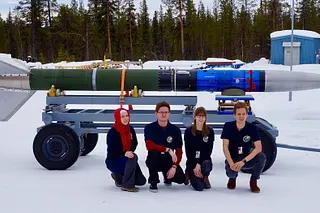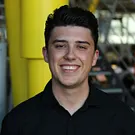Change Language :

For collecting space debris
dryspin® in rocket

Technical data:
- What was needed: A rocket module that collects space debris from Earth orbit
- Requirements: High torque, low speed, friction & wear, fast & cost-effective production, low weight, small installation space
- Products used: dryspin® Stainless steel threaded spindle, 3D printing lead screw nut made from iglidur® J260, NEMA 11 stepper motor, Tribo Tape
- Success for the customer: Lars Flemnitz, electrical engineering student and proximity switch of the UB-Space project: "We tested several drive systems. Two lead screw drives used in parallel worked best here."
Free fall in space - with drive components from igus®
Students develop experiment for sounding rocket REXUS 21
More than 30,000 objects are orbiting the earth as space debris and pose a danger to satellites. In the UB-Space project, six students from the University of Bremen and Bremen University of Applied Sciences are creating the conditions for "collecting" this rubbish again. They are even sending a rocket module into space for this purpose. On board are drive and sliding elements from igus®.
They ensure good television reception and that drivers reach their destination safely via GPS signal: More than 1,000 satellites orbit the earth. However, as manned and unmanned space travellers have been in orbit for decades, there are now more than 30,000 objects in Earth orbit that are considered "space debris". They pose a danger to the active satellites, as the objects are travelling at an average speed of 25,000 km/h and would release considerable destructive energy in the event of an impact.
Products used
Do you have questions about drylin® lead screw technology?
Our expert Thorben Hendricks will answer all your questions about drylin® lead screw technology. Simply fill in the contact form and we will take care of your enquiry. We look forward to hearing from you!
► Request contact online
► Arrange an appointment
► Expert support on request by phone or via video chat function
► Order a free sample
Consulting
I look forward to answering your questions

Julian Peplinski+49 2203 9649-7885Write e-mail
Shipping and consultation
In person
Monday to Friday: 8 am – 8 pm
Saturday: 8 am – 12 pm
Chat-Service
Monday to Thursday: 8 am – 6 pm
Friday: 8 am – 5 pm
WhatsApp-Service
Monday to Thursday: 8 am – 4 pm











